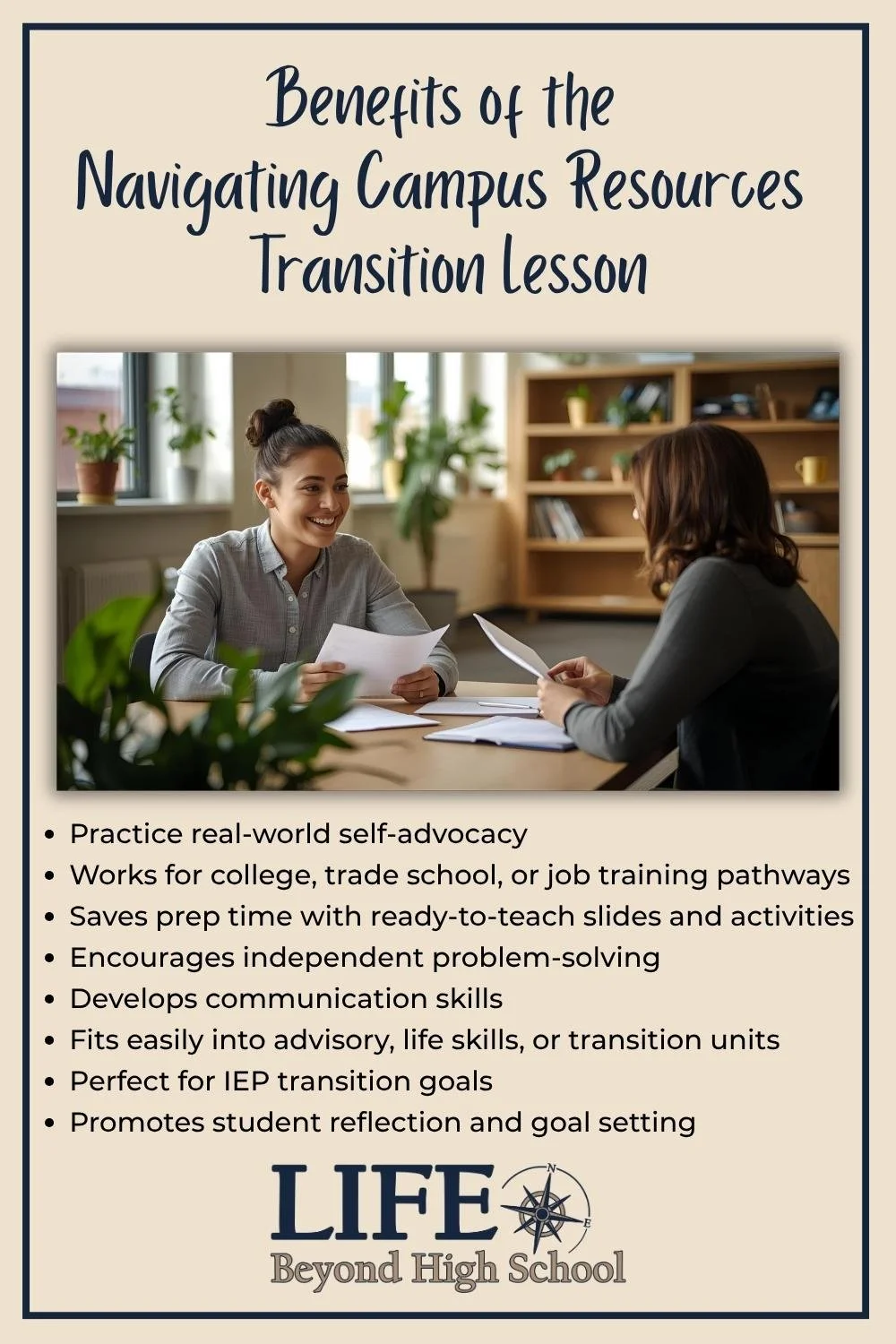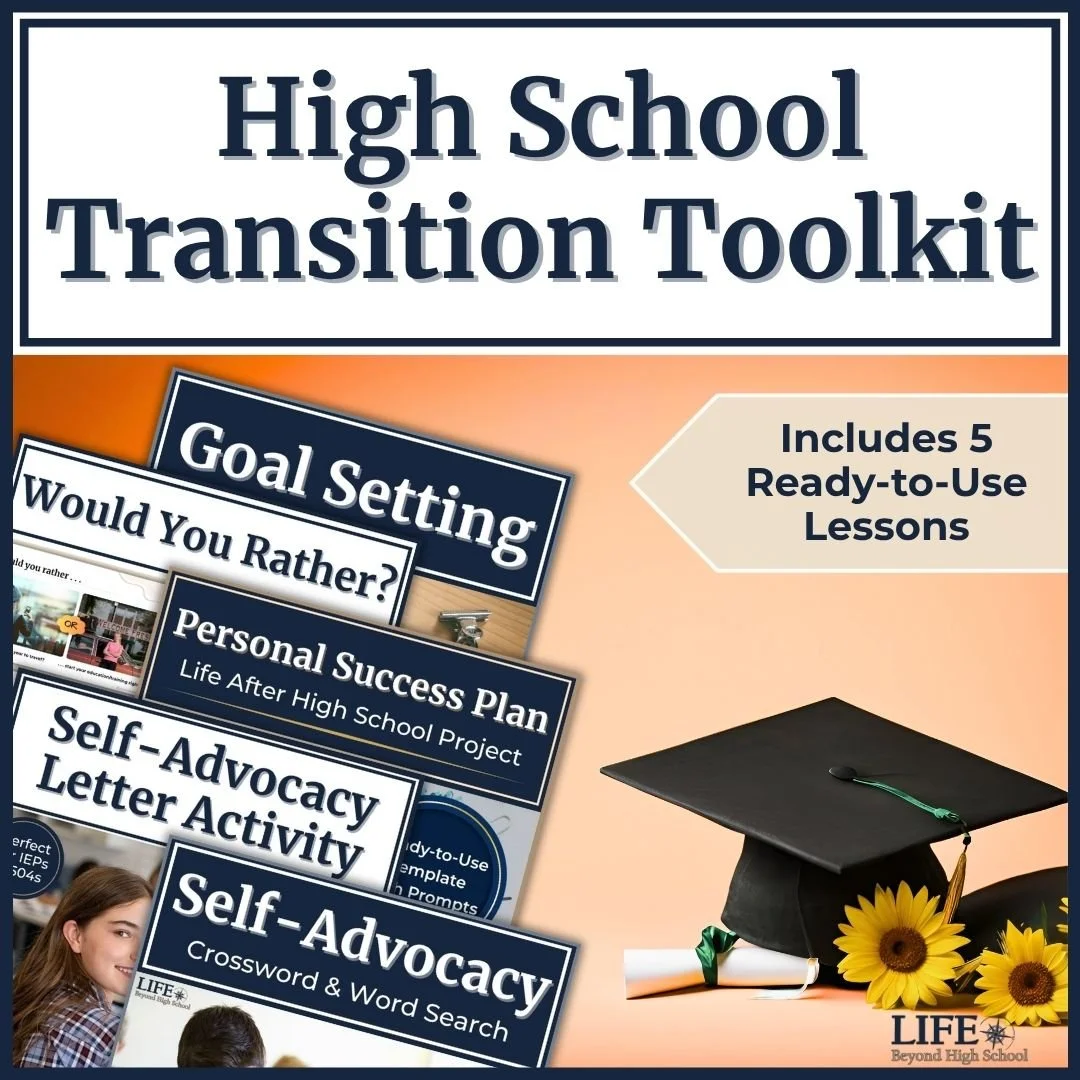Navigating Campus Resources: A College Transition Lesson
Almost 40% of college students drop out before finishing a degree, often because they don’t know how to ask for help or where to find it. This college transition lesson helps students beat those odds by learning to navigate student resource centers, tutoring, academic advising, financial aid, and more.
A lot of my graduating seniors go on to community college, and even though they’ve come from a comprehensive high school, they’re often overwhelmed in that new environment. I kept having students come back to me after graduation because they didn’t know where to go for help or how to find comparable supports on campus.
That’s when I realized I was doing them a disservice by not preparing them earlier. I started building this lesson to give students that familiarity before they go—so they already know what to look for, who to talk to, and how to start those conversations confidently.
This resource gives them real-world practice with self-advocacy before they need to use it on their own.
What Students Learn
By the end of this self-advocacy activity, your students will be able to:
Identify 11 key campus resources: financial aid, academic advising, career services, tutoring, tech support, library help, health services, campus safety, disability services, mentoring, and VA or military benefits
Match real-world scenarios to the correct support service for students
Find and record contact info for a real student resources center
Write a professional email requesting help or an appointment
Challenge myths about asking for help and reflect on their own self-advocacy goals
What’s Included
Everything you need to teach self-advocacy and support services in education:
✅ Google Slides + PowerPoint Presentation — Introduces 11 essential campus offices with clear visuals and helpful speaker notes
✅ Scenarios and Matching Worksheets — Help students connect common college challenges to the right campus office (two levels: matching and open-ended)
✅ College Resource Scavenger Hunt Worksheet — Students research a real or sample campus to find contact info and access details for each support service
✅ Myth-Busting — Encourages students to question common fears about asking for help and identify services they’d benefit from most
✅ Email Writing Practice — Guides students in crafting a professional email to schedule an appointment, complete with a sample model
Why Teachers Love It
Real-world prep: Students gain independence and confidence using actual support systems
Flexible use: Works as a one-day transition activity or a multi-day mini-unit
Built-in support: Perfect for learners who need extra structure or language scaffolds
Teacher-ready: Slides, notes, and answer keys included—no extra prep
Relevant for all pathways: Works equally well for college, trade school, or job training programs
Implementation Ideas
Use during college and career readiness units or transition planning
Add to advisory, life skills, or independent living classes
Incorporate to help meet IEP self-advocacy goals
Prep students before orientation, campus visits, or training start dates
Pair with a quick discussion about which services exist at local programs or training centers
Addressing Common Concerns
“My students aren’t college-bound.”
That’s okay! These same self-advocacy strategies apply to any postsecondary path—most vocational programs, apprenticeships, or career training have comparable student support services.
“I don’t have time for another full lesson.”
You can use this in one class period, or break it into mini-lessons for advisory or transition planning. Everything’s structured and ready to go.
Ready to Preview?
✨ See the lesson preview to explore the resource in more detail.
Help your students practice self-advocacy by finding and using the right campus resources—so they can stay enrolled, get support, and thrive in their next chapter.
Pair It with Other LBHS Resources
Self-Advocacy Puzzle Set – Vocabulary practice for talking about supports and rights
Exploring Life After High School Lesson – Compare college, career, and training options
Goal Setting Lesson – Help students write personalized SMART goals
Personal Success Plan Project – Long-term planning for life after graduation






